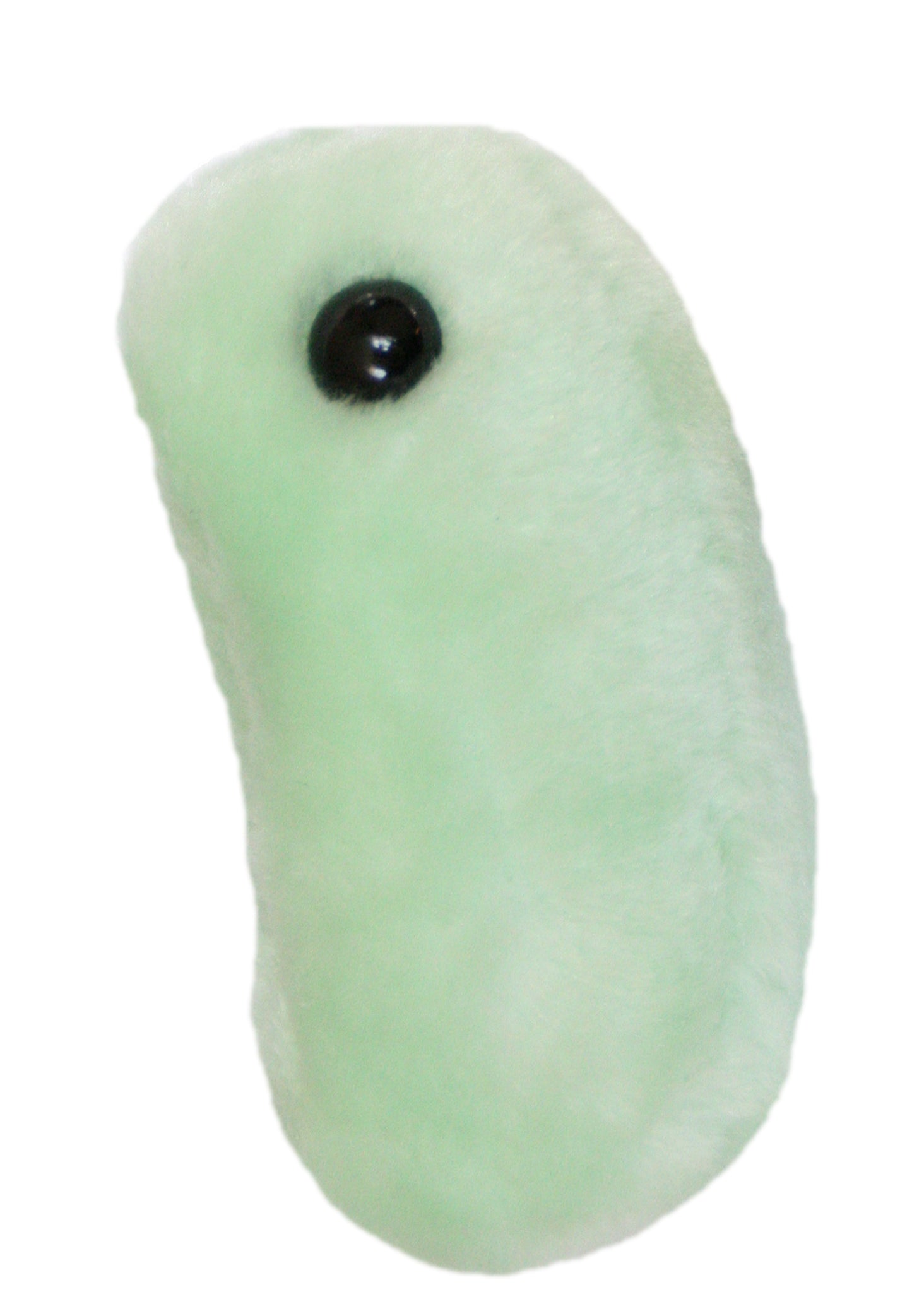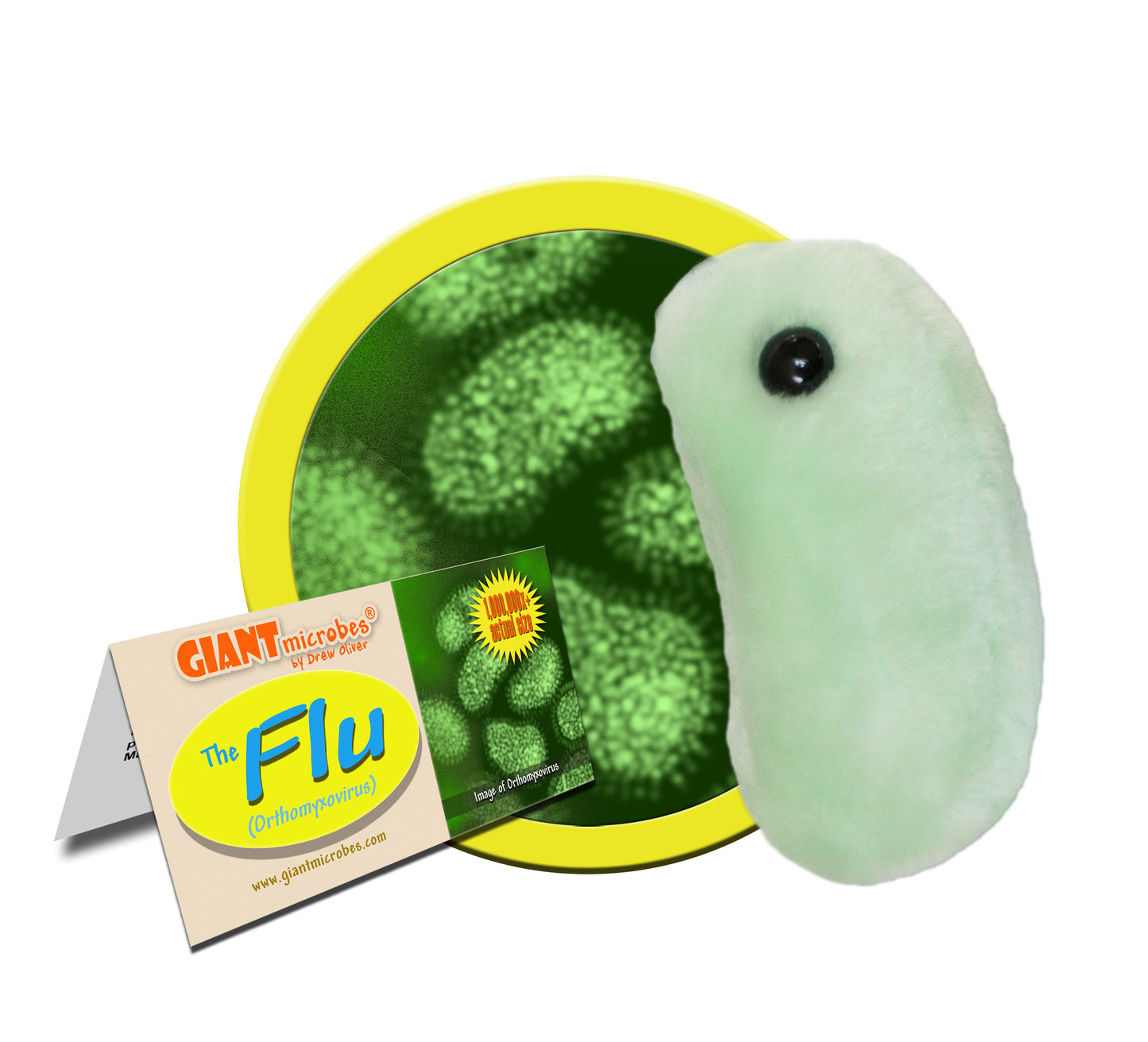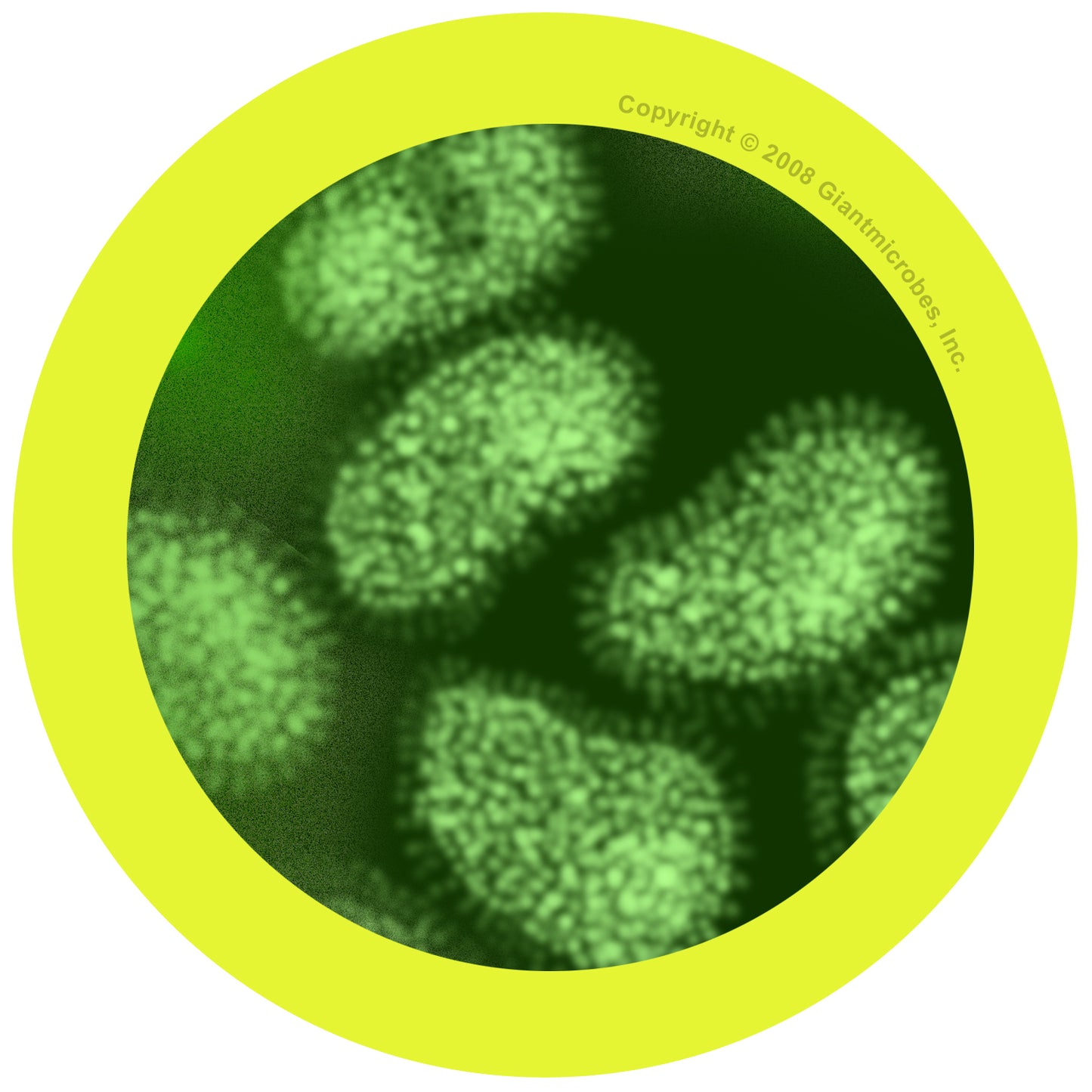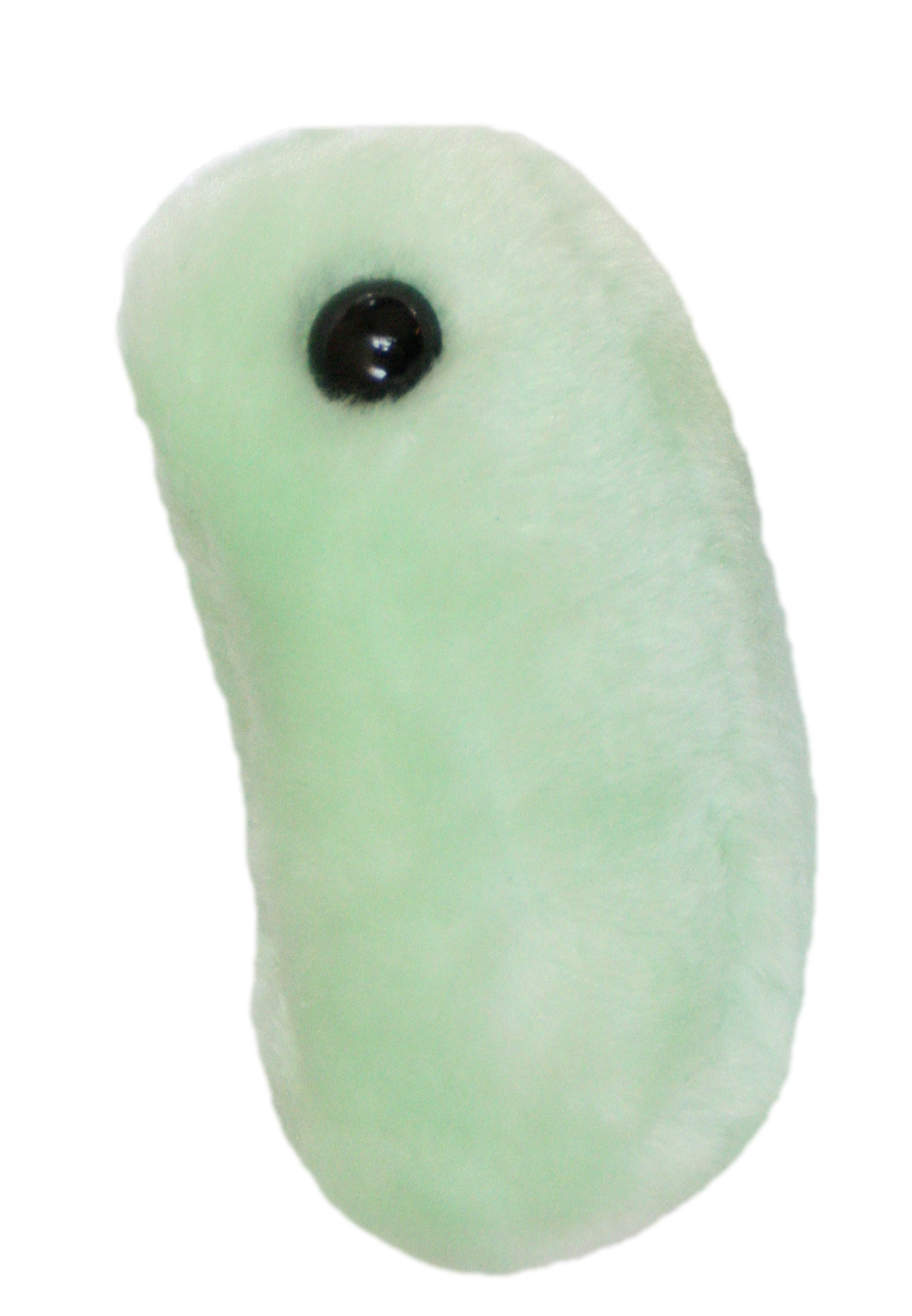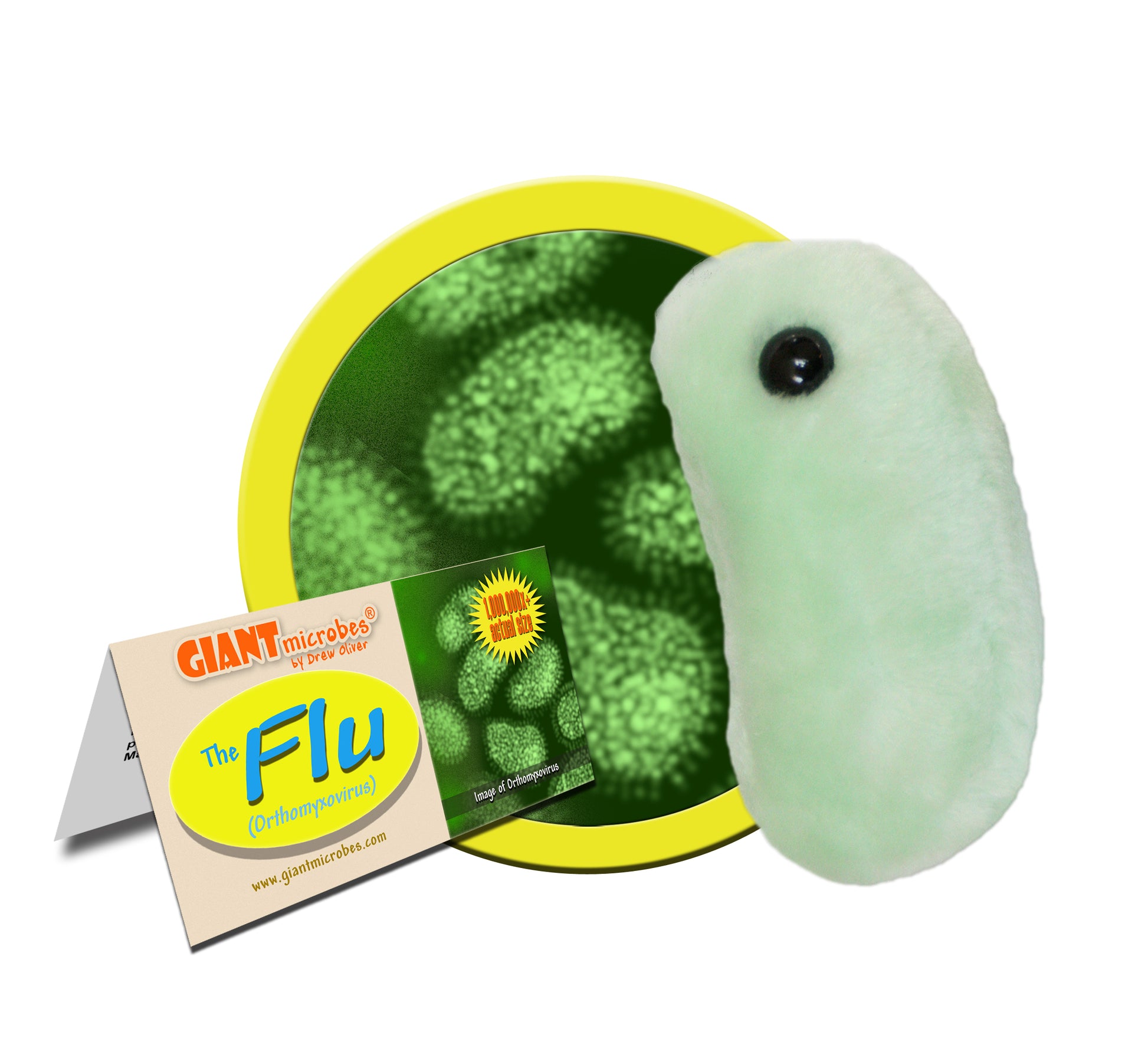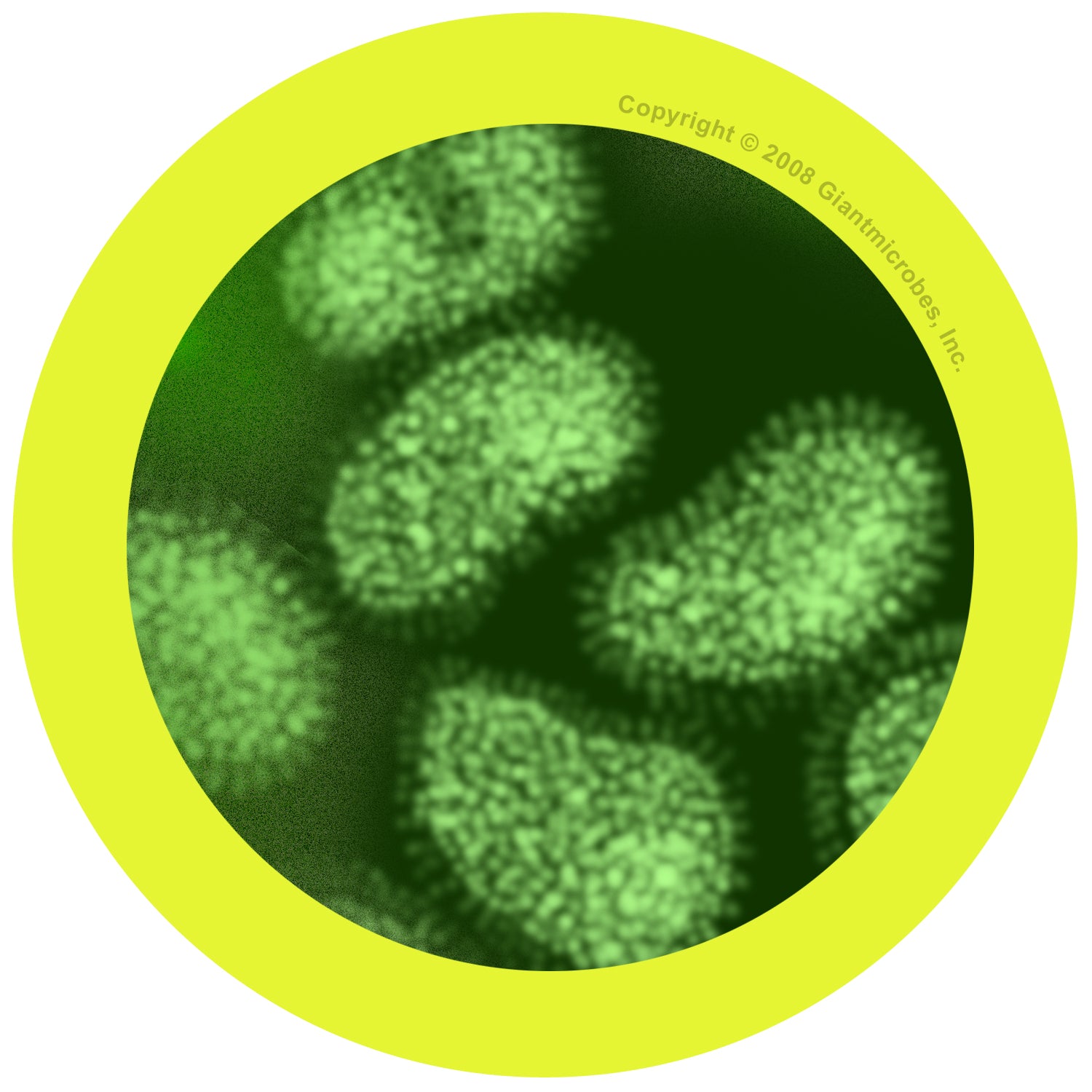Flu (Orthomyxovirus)
Flu (Orthomyxovirus)
Couldn't load pickup availability
- A unique sympathy gift for someone who has the flu
- Good reminder to get the flu vaccine
- Teaching and learning tool for medical professionals and amateurs
All About Flu (Orthomyxovirus)
FACTS: The flu, a.k.a. influenza, is a respiratory infection caused by strains of orthomyxoviridae. The word "influenza" comes from the Italian word for influence – back when the stars were thought to influence the start of an epidemic!
Every year 5% - 40% of the population gets the flu. Fortunately, most people recover completely in a couple of weeks. Even more fortunately, since there are only about a dozen different flu viruses, vaccines have been developed that can be up to 90% effective in preventing infection in the first place.
These vaccines, or "flu shots," are best taken in the fall before the flu season starts, since it can take several weeks for them to become fully effective. (However, since eggs are used to make the vaccines, people who are allergic to eggs should not get the shots.)
In 1918, before there were any vaccines, there was a worldwide pandemic of Spanish flu. Twenty million people were killed. Maybe today we should thank our lucky stars for the vaccines!
| NAME | Orthomyxovirus A |
|---|
| WHERE IT LIVES | Many strains of the flu reside in pigs and birds in addition to humans. In fact, birds are home to a greater number of strains of the influenza A virus than humans are! Less commonly, the flu has also been found in bats. |
|---|
| SYSTEM | The flu virus targets the respiratory system |
|---|
| COMMONALITY | • The flu affects people worldwide! • Thousands of people worldwide get infected by the flu every year. |
|---|
| CURE | There is no cure yet. However, there are many remedies to treat or prevent the flu! Go to your doctor for a seasonal flu vaccine, getting rest, drinking lots of fluids, or applying cool wash cloth to hot areas. |
|---|
| DEADLINESS/SEVERITY | • Most at risk to to death are those with weaker immune systems (the young & elderly) • Symptoms arrive usually 24 hours after infection and last from 5-7 days in the average adult. |
|---|
| INFECTIOUSNESS | The flu is spread by droplets of these microbes via breathing, coughing and sneezing by infected people--highly infectious densely populated areas (college campuses or cities) |
|---|
| HISTORY | Scientist Richard E. Shope, who investigated swine flu in 1920, had a suspicion that the cause of this disease might be a virus. In 1933, scientists from the National Institute for Medical Research in London - Wilson Smith, Sir Christopher Andrewes, and Sir Patrick Laidlaw - for the first time isolated the virus, which caused human flu. The word influenza stems from the Latin word influential for “influence”, which was popularized from an outbreak in Italy in 1743. The deadliest outbreak the world has seen was in the Spanish Influenza of 1918-1919, which killed about 550,000 people in the United States and claimed over 20 million lives around the world. |
|---|
| FASCINATING FACTS | This past season (September 2014-Februray 2015), the influenza A H3N2 virus infected the most people and caused the most deaths in people over the age of 65. POP CULTURE: • Munch, the artist of the famous painting The Scream, was inspired by the pandemic of the Spanish Influenza from 1918-1919 to paint his Self-Portrait Spanish Influenza. • Joe Montana, quarterback of the 1979 Notre Dame football team, ate chicken noodle soup at halftime of the Cotton Bowl in order to battle this crippling microbe and helped Notre Dame complete its 4th quarter comeback to beat Houston 35-34. • With the series tied at two games apiece with the Utah Jazz, Michael Jordan of the Chicago Bulls scored 38 points in a crucial Game 5 of the 1997 NBA Finals while battling severe symptoms of the flu. Jordan and The Bulls would go on to win the championship the next game. |
|---|
